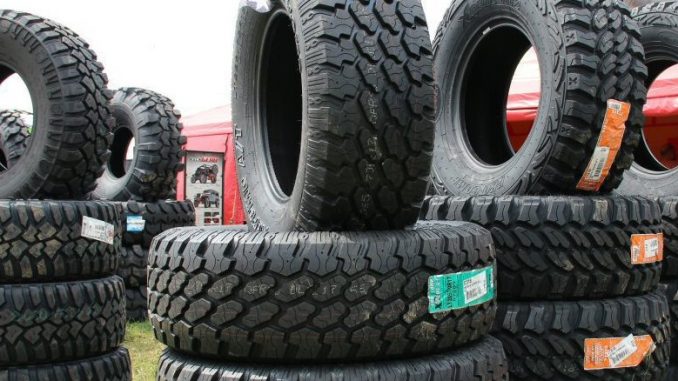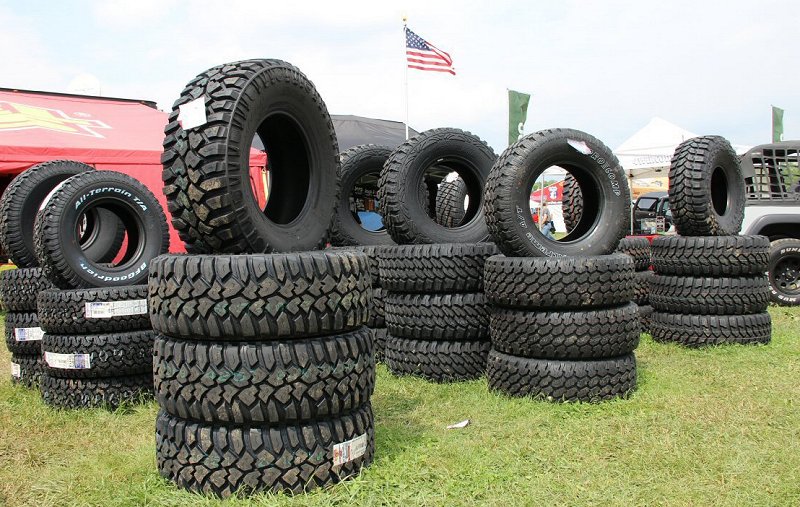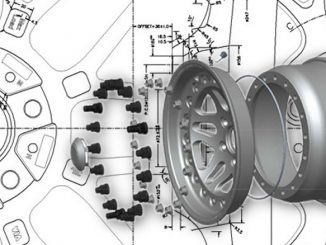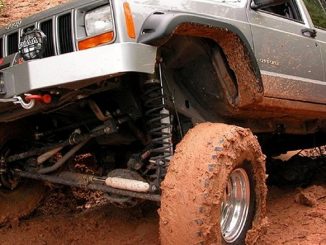
Selecting or buying truck tires is one of the best ways to improve the performance of your truck, but making that decision can be difficult if you have never been faced with it before. One of the first considerations to make is where you will be driving your vehicle. Do you drive mostly on the street, a combination of street and off road, or exclusively off road? Most truck tires that are equipped on a new vehicle from the factory are what would be considered standard “street” driving tires. To go off road in difficult terrain like steep rocks or mud, the biggest factor you have to overcome is height so you will need to choose a bigger tire that is at least one or two sizes taller, regardless of the tread type. A good place to start is by looking at the decal inside your driver side door or glove compartment. In there you will see the standard tire allowed and the biggest possible choice you can have if your vehicle has it as an option.
 Here are some important steps in purchasing truck tires and wheels for your truck:
Here are some important steps in purchasing truck tires and wheels for your truck:
Be able to read the truck tire sidewall to determine the over-all performance of your chosen tires. Every truck manufacturer has separate ratings for the tires, but what is important to you is the warranty coverage. Who will give you the most in savings for your truck tires and wheels?
Truck tire size rating is usually shown in metric, which can be traced on the side of your original truck tire. However, when better performance is required for your truck, you can select an upgrade to what your current rating is as long as you keep this in mind: Never go to the extreme, always stay in the middle ground of what the list suggest to make sure that the tires you get are not out rated for your vehicle. If they are then reduced tread life and other issues can occur.
Truck tire speed rating is the speed range at which a truck tire can be used in different speed and load conditions. For example, the most common designation uses the “V” category for 240 km/h or 149mph speed range and the “Z” speed rating for top speed. This ensures that you can safely drive the tire on the speed you choose.
Truck tire load rating index is the assigned numbers delegated to a tire that will tell you the safe load that can be used for a tire. Again use moderation when selecting this but know first what kind of load you will be using on the tires. The higher the number the higher the load they will handle.
When selecting truck tires that you are not familiar about, always go to the vehicles identification sticker (located in the vehicles door or glove box) or owners manual as your guide. In there you will see the speed, rim size and allowable payload intended for your truck tire and wheel.
Choosing the tire that’s right for your truck involves numerous considerations. But to make the process less scary, keep these two simple guidelines in mind when considering tires. First, know your expected needs and driving uses. This consideration is important to overall driving enjoyment and a well-run tire shop will help you determine your tire needs before you lay down any green. Second, find a source or store that you trust enough to recommend the type of tire that fits your needs. Remember, the sales people don’t know your needs, you have to tell them. If they’re good, they’ll ask you the right questions to come up with the right tire.
You might be wondering what some of the questions could be. Here’s a quick list of what you should think about before entering a tire store:
- Tread life considerations: What’s your idea of how long a set of tires should last? Keep in mind that in some instances, a tire’s wear rating is done through manufacturer testing and may not be the most accurate representation of a tire’s true life expectancy. One way to get a handle on a tire’s projected life expectancy (besides what they’re warranted for, say, 40,000 miles for example) is to look at part of the UTQG (Uniform Tire Quality Grading) rating. The U.S. Department of Transportation requires each manufacturer to grade its tires under the UTQG labeling system and establish ratings for tread wear, traction and temperature resistance.
- Wet weather requirements: Most of us live in a climate where inclement weather is a factor at least part of the time. Clearly if you live in, say, Washington or Oregon, you’ll want to look more closely at a capable wet-weather tire for your truck than if you’re living in Arizona or Nevada. For those of you in Snow Belt states, some kind of four-season type of tire will be the minimum you should consider if not an all-out snow tire for the winter that you swap for standard tires in the milder months.
- Speed rating: Even in the plains and Western states like South Dakota, Nebraska, Idaho, Montana, New Mexico, Colorado, Wyoming, Utah, and Nevada where the rural interstate speed limit is 75 mph, how often do you think you’re going to need a tire that’s speed rated for anything over 150 mph? Be honest and knock down your required speed rating to, say, an H-speed rated tire that’s still good for 130 mph.
- Ride Quality: A low-profile tire such as a 50 or a 40-series looks great, but can be harsh over bumps or potholes when compared to a 55 or 60. In general, a lower profile tire also exposes the wheel to damage more easily. Lower profile tires also have stiffer sidewalls, which improves handling but increases rides harshness. It’s all about compromise and there’s no such thing as a free lunch. If you do any off roading at all then make sure you stay away from low profile tires. When going over rough terrain you want more sidewall in between the ground and your trucks rims. Otherwise, a dented wheel will be the result.
Most online stores have the proper size index from where you can input your vehicle information. After feeding this info, a corresponding truck tire’s specs will be given to you based on the different brands available. You can then make your comparison.
While some truck tires are lower quality than others, there are so many good ones out there that you will usually have several possibilities from which to choose. We’ve discovered here that it’s best to be straightforward with what you really need and factor it in with that ever-present budget consideration. Then you will have the ability to keep your truck well grounded.
——–
About the Author
Jeff Jackson is a successful free lance writer and truck enthusiast who enjoys providing valuable tips and advice for online purchasers of Truck Accessories, Truck Wheels, and Truck tires. When he is not writing he can usually be found in his 4×4 out on the trails of his home state, Florida.





I like your suggestion to consider the weather in your area (whether it is dry or wet) when buying truck tires. My husband just bought a truck, so we are wondering how to find some great tires for it. We will definitely have to start our search by first looking at which models will be best for rainy weather.
I’ve been thinking about getting some new truck tires. I’m glad you talked about how you want to look at the speed rating for your tires. I’m going to have to do some looking and see what truck tires would be best for me!
I’m glad you mentioned how important it is to get tires that can drive well in wet conditions if it rains where you live. My husband is looking at Ford trucks for sale, and he wants to make sure that it can handle the rain we get where we live. Maybe he could get wet-weather tires specifically for the truck.